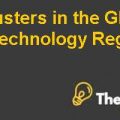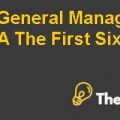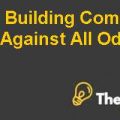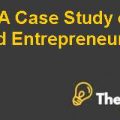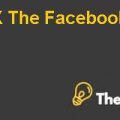
Introduction
Tata Group is the largest Indian business corporation. Tata Steel acquired Corus that is a U.K based with $12.1 billion, which is the largest acquisition in the history of South Asian countries. It is involved in 96 functioning companies and seven business sectors which include: materials, services, engineering, energy, consumer products, information systems and communications, and chemicals. Some of the well known companies of Tata Group are Tata consultancy service (TCS), Titan, Indian Hotels, Tata tea, Tata steel and Tata Motors. It is India’s largest tax payer group and private entity. Tata Steel is the largest Indian steel manufacturer company. Tata group is operating its business in more than 54 countries, which exports products and services to 120 nations. Tata group opened its first luxury hotel in India in 1903, its first private steel entity in 1907, first airline in 1932 and started its first software company in 1968. According to the financial statement of Tata’s 2006-07, Tata Motors, Tata Steel, TCS, Tata Power, VSNL and Tata Chemicals contributed 77.6% of the total revenue of the group.
Analysis
Ratan Tata did some changes which turned Tata Group into a more unified corporate entity. Tata Group introduced a brand entity scheme under which every group companies will have to pay for the usage of brand name. Later on, Tata realized that the business should not be limited to the domestic market but it should also be focused on the international market to expand the group and business. Tata companies did partnership with Mercedes, AT&T, Silicon Graphics, IBM, Honeywell and some other foreign companies during the span of 1990s. This business partnership helped Tata companies to build their competencies which led them to compete in the global market. Tata Group was now focusing on the acquisition in the international market with low risk factor.
Tata Consultancy Service (TCS) grew swiftly as compared to other Tata companies. Later on, TCS expanded its business to the North America and Europe. It acquired some of the reputed international IT provider companies globally. TCS collected the profit of $27.8 billion of the total revenue of Tata Group which was $59.5 billion in August 2007.
Titan is an Indian jewelry and watch brand which was established in India but when Titan entered the international market, it incurred losses in European market during the time span of 1990s. When Titan reached the Middle East, it became more successful to target the market of Middle East specifically to the population of non-resident Indians.
Tata Group purchased properties in New York, London, Washington DC and Chicago; however they faced loss in the hospitality business and divested them afterwards. Later they focused on the higher end properties and built their presence in developed markets with its management contract.
Tata tea was facing very slow growth in the tea market domestically within India due to which they decided to make a new brand for which they acquired Tetley – UK based Tea Company in 2000. It was the largest ever made acquisition in the Indian history at that time period. Later on during 2004-05, they did M&A with US based Czech Tea.
Tata Steel is the largest steel manufacturer locally within the Indian market; still Tata Steel acquired many international steel manufacturing companies to enter and develop more in international market. M&A with Corus took Tata Steel to the 6th largest steel manufacturing company which was previously at the 56th rank. Acquiring Corus helped Tata Steel to improve in R&D and in its operating process as well.
Tata Group Center helped the group companies to keep interaction among them, which were operating in the same country and under the same umbrella of Tata Group. GC improved procurement and brand promotion and established offices to deal with media and maintain government relation. GC started Project Prune during 2003-04 to deal with the procurement process in order to cut down the costs and extra expenses which helped the Tata companies to save $20 million in 2006-07.
Tata Motors is the largest vehicle manufacturer company in India and its revenue in FY2006-07 was $7.2 billion. Tata Motors is mostly known for manufacturing cheaper cars to target the middle class people. Later on Tata introduced Nano which was one of the most successful models of Tata Motors. Its price was only at $2500 and it was manufactured to replace motor bikes and scooters. In addition since competition was huge in the local market, hence Tata Motors was required to internationalize its product. Tata Motors had to develop more advance products in order to compare itself with its competitors. They knew that competition will become stiffer even in the local market. After the loss of $105 million, they withdrew from different countries to focus more on the areas such as Middle East, South Africa and Korea. Initially they were not successful in the advanced countries. Later in 2003 they partnered with UK based company, MG Rover to launch Indica as a CityRover into the European countries. They had to supply 100,000 CityRovers to MG Rover within the next five years but the sales were only a fraction of specified figure. Tata Motors were not pursuing M&A on the scale as Tata Tea or Tata Steel did. In 2004, they acquired a......................
This is just a sample partial case solution. Please place the order on the website to order your own originally done case solution.

